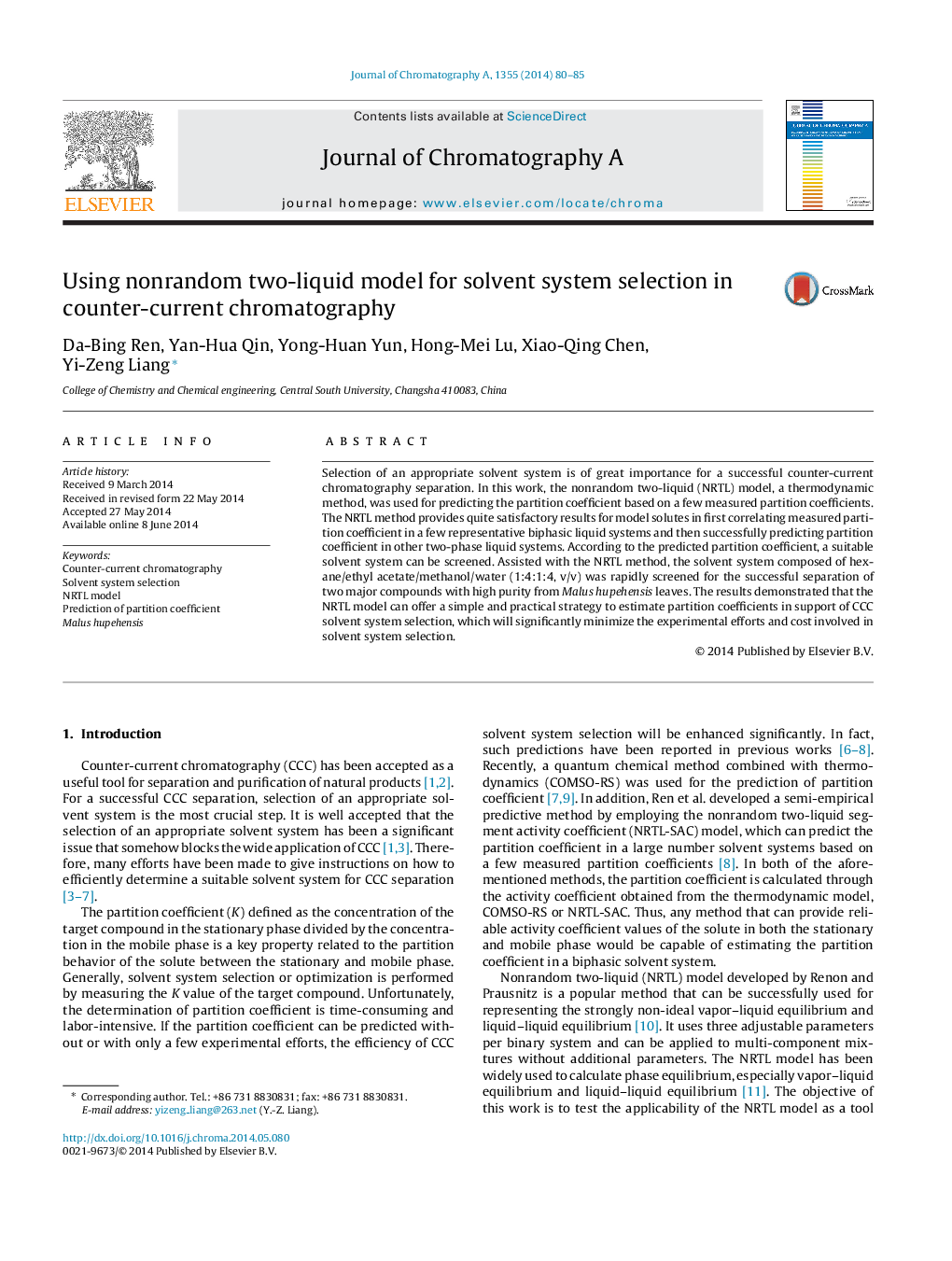| Article ID | Journal | Published Year | Pages | File Type |
|---|---|---|---|---|
| 1199783 | Journal of Chromatography A | 2014 | 6 Pages |
•A semi-empirical predictive method was established by using the NRTL model.•The established method can be used for predicting partition coefficient.•The method was tested and validated with model solutes and a real life separation.•The experimental efforts and cost involved in solvent system selection are reduced.•Two major compounds were successfully separated from Malus hupehensis.
Selection of an appropriate solvent system is of great importance for a successful counter-current chromatography separation. In this work, the nonrandom two-liquid (NRTL) model, a thermodynamic method, was used for predicting the partition coefficient based on a few measured partition coefficients. The NRTL method provides quite satisfactory results for model solutes in first correlating measured partition coefficient in a few representative biphasic liquid systems and then successfully predicting partition coefficient in other two-phase liquid systems. According to the predicted partition coefficient, a suitable solvent system can be screened. Assisted with the NRTL method, the solvent system composed of hexane/ethyl acetate/methanol/water (1:4:1:4, v/v) was rapidly screened for the successful separation of two major compounds with high purity from Malus hupehensis leaves. The results demonstrated that the NRTL model can offer a simple and practical strategy to estimate partition coefficients in support of CCC solvent system selection, which will significantly minimize the experimental efforts and cost involved in solvent system selection.
